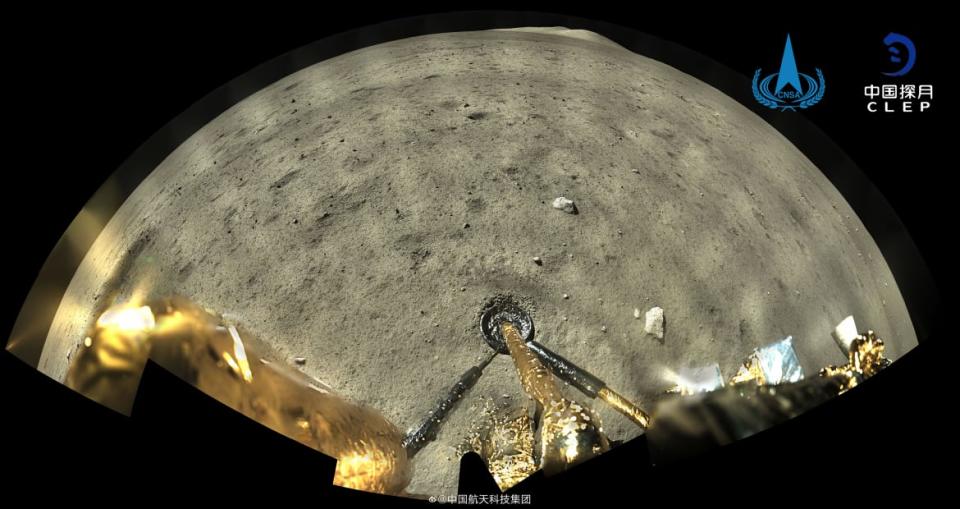China’s New Moon Rocks Hint at a Violent History

A little less than a year ago, China made history by bringing samples of the moon back to Earth—the first new moon rocks brought back to Earth since the last Apollo mission in 1972. The point of the mission, called Chang’e-5, was not just to demonstrate the country’s technological prowess in space and further its lunar exploration ambitions, but also to probe these samples and solve some of the mysteries behind how the moon has evolved over its 4.5 billion-year history.
And that scientific work has an arguably more tantalizing goal: using the history of the moon to understand what kinds of resources are sitting on or below the lunar surface that could help future lunar colonists more easily sustain their homes. The most important of these potential resources is water, in the form of ice—which we know the moon has truckloads of waiting to be mined.
The first insights from the Chang’e-5 samples just might mean that water on the moon runs deeper than we’d thought.

An image of the lunar surface captured by Chang'e-5, shortly after landing.
In a trio of studies published in Nature on Tuesday, Chinese scientists have learned that the moon evolved more slowly than once thought. Volcanic activity and interior heating did not slow down in the regions formerly home to the Chang’e-5 samples until almost a billion years past what previous estimates predicted. This volcanic activity seems to have purged these regions of a lot of water, so that the present-day Chang’e-5 moon rocks are less hydrated than their Apollo counterparts.
On their own, these findings might seem to say there’s less water on the moon than we hope. But Clive Neal, a planetary geologist at the University of Notre Dame, told The Daily Beast it’s all about properly interpreting the new findings.
In his view, the results actually suggest “there’s a water signature that’s enduring a long time throughout these regions of the moon,” despite billions of years of violent volcanic activity. These samples “are derived from sources that still have a hydration signature.” And the presence of that signal means the moon’s water might be much more resilient than we think.
“The fact that they've got a water abundance out of these samples is something to sort of look at in terms of ‘Wow, there is still a hydration signal.’ It might be a source that’s only just been tapped,” said Neal.
China Wants to Be First to Colonize the Moon and Mars
The obsession with water on the moon is twofold: it’s a resource that could be turned into something that moon settlers could drink to stay alive. But it’s also something that could be converted into rocket fuel, which would turn the moon into a kind of interplanetary gas station for cheap refueling (versus hauling all necessary propellant during launch from Earth). That’s why NASA is launching a rover named VIPER in 2023 to prospect and study water on the moon.
It’s going to take many more studies to really narrow down what the real history of water on the moon is, and what that means for future lunar exploration. But while the U.S. is busy preparing VIPER and the return of astronauts to the moon later this decade, China’s new moon rocks are filling up the curiosity gap pretty well.
Got a tip? Send it to The Daily Beast here
Get our top stories in your inbox every day. Sign up now!
Daily Beast Membership: Beast Inside goes deeper on the stories that matter to you. Learn more.

 Yahoo Finance
Yahoo Finance 